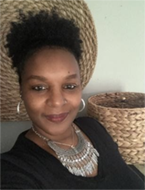
Email or Call: 1-800-577-4762


NEWSLETTER
CONTACT US

A Silent Dialogue: Coming Together During Troubling Times
An Unspoken Dialogue
“I’m not really sure why I made the appointment that day. Despite the pandemic, I hadn’t lost much of anything. I was weathering the viral storm and had no significant life ‘problems,’ and certainly none in comparison to the tragic stories I heard and saw in the lives of others. While I was able to remain relatively insulated, I had grown increasingly isolated, so turned more and more to the news and Twitter. But it seemed like a different virus, one far more virulent had taken hold, and I grew angrier with each story of injustice and ignorance. Division, violence, hardship, poverty, and hatred seemed to be competing in a zero-sum, race-driven death spiral. Was there something about those stories of racism that touched a nerve, leaving me looking inward to wonder, ‘Had I been quietly infected early on?’ ‘Was I asymptomatic, and perhaps a carrier?’ ‘Did my privilege cast a white self-blinding light?’ I’m not sure why I went to therapy that day, or why I sought out a Black clinician.”
“She seems like a confident, no-nonsense, get-right-to-the-point person—refreshing considering the passive clinicians I’ve worked with in the past. Granted, they were White, and this woman is Black, so maybe given what’s going on in the world, she doesn’t have time for the bullshit, but I do feel a bit pressured, although I like her style. I wonder if she has any thoughts about working with a White client. Those pictures she has behind her on the wall are so far from the neutral, Rorschach-esque pastels that other therapists have had scattered around their offices. You know, those faux-art reproductions designed to convey the therapist’s neutrality. These are as about as far from neutral as possible. The ones with the woman holding up her fist even looks like her. Why would she put such seemingly provocative images in plain sight, and are they really her? Isn’t that saying a bit too much about her when this is supposed to be about me? I’m curious, but I don’t want to ask. Is she inviting, or perhaps provoking, a discussion about race?”

A Picture is Worth a Thousand Words
“He seems to be looking at my pictures a lot, so I wonder what is going through his mind. Is he curious about their content and what they might represent? Has he made the connection that the woman in those pictures is me? Does he wonder who the screaming man is? Maybe he is thinking I have shared too much about myself and my beliefs and is intimidated. I’ll let the conversation flow for a while and see if he decides to bring them up. I certainly have had some interesting reactions from other clients, both Black and White. My reason for placing the images directly behind me for clients to see when they look at me, either face-to-face or virtually, is to remind myself and others that we are all in a fight of some kind against an injustice. Some fight for basic human rights, others fight for sobriety, while still others fight to escape the burden of physical, mental, and spiritual inequity. Whatever that thing is...we are all fighting. The pictures also serve as a reminder to not become complacent and comfortable...but to remain aware and educated.”“‘What the hell,’ I thought. I am here, she is here, we are here working together, and those images strike a chord in me. They make me angry, but not the kind of angry that I take away from the news. It is the kind of anger that makes me want to fight against the unjust way I treat myself, the way I have stifled my voice at work, with my partner, with my friends. They make me angry at my parents for forcing such a passivity on me while growing up. ‘Respect others, don’t raise your voice, don’t ask for what you want, don’t bring attention to yourself,’ was our family mantra. And here I am, in mid-life, still not asking for what I want, what I deserve, still feeling oppressed. No wonder those images are so provocative. While it would be so easy to see them solely through the lens of race and racism, they are universal. That they are of Black people is simply a reflection of this therapist’s beliefs, and she has not tried to foist them on me. She has patiently waited for me to open to them…to myself. Makes sense now.”
“That was a hell of a session. I finally came out with the question—‘Am I a racist?’ I finally asked her about the images, and we had a great conversation about race, racism, her life, my concerns. We share much in common, and as it turns out, I have been oppressed, and that is why I have been so angry. I get it! Not because I have been denied access to public places, followed around in a store, profiled or persecuted—at least not by others. But by myself! I’m not a racist, but I get it, I understand racism. I am a self-ist; a one-man militia armed to suppress any rebellion that might arise within me that seeks power, justice, and freedom to live. I have not been physically attacked, verbally harassed, or threatened within an inch of my life.
“He is making swift progress and putting the pieces together. He is looking deep inside, and it is painful, but he is marching. He finally asked me about the images, and while we spoke about their role in my life, we quickly shifted that conversation to his own. He connects with the anger around racism because he has been attacking himself. While outwardly privileged, he has been inwardly oppressed, and he has been the oppressor, with the help of some lingering childhood scripts. I’m glad he finally asked about the images, and that I have had the courage to display them. I don’t think he is racist, and while he can’t truly feel what I and other Black people feel, he understands oppression. I have had similar experiences with some of my other clients. Positive reflections of my background images have been offered from both Black and White clients. The comments have included, ‘I like your artwork—I have art around my house’ (Black client) and ‘You put pictures up, tell me about these…love the artwork’ (White client). Some have gone deeper, as has this client. Some have been ready to explore, so we have dived deep; others less so.
“I am going to schedule a few more sessions and am no longer calling it ‘therapy.’ It is advocacy. I have joined the fight to liberate myself, and I hope to turn that fight outward to help others who are being oppressed.”
“I just logged on to join my IOP group. One of the clients (White female) who missed the group said—out loud—‘Tori, your picture in the back is so empowering!’ She then said…‘I love it!’ Needless, to say, I was smiling from ear to ear. I’m gratified.”
© 2020 Pyshotherapy.net LLC
 Tori Lester, MA is a CMHC graduate student at Capella University. It is her self-image that hangs on the wall behind her in her home office. Tori is married, has two daughters, and is committed to the belief that all people have within themselves the ability to reach their full potential—but sometimes we all need someone to fight for us.
Tori Lester, MA is a CMHC graduate student at Capella University. It is her self-image that hangs on the wall behind her in her home office. Tori is married, has two daughters, and is committed to the belief that all people have within themselves the ability to reach their full potential—but sometimes we all need someone to fight for us. Lawrence Rubin, PhD, LMHC, ABPP is a Florida-based psychologist, mental health counselor and registered play therapist-supervisor, who directs the Mental Health Counseling program at St. Thomas University and is on the clinical faculty of Capella University. He specializes in the assessment and treatment of children, teens and their families. Larry recently joined our team as editor, and when not working, likes to stare wistfully into the setting sun in the mountains of North Carolina with his wife, Randi and their Chiweenie Lilly.
Lawrence Rubin, PhD, LMHC, ABPP is a Florida-based psychologist, mental health counselor and registered play therapist-supervisor, who directs the Mental Health Counseling program at St. Thomas University and is on the clinical faculty of Capella University. He specializes in the assessment and treatment of children, teens and their families. Larry recently joined our team as editor, and when not working, likes to stare wistfully into the setting sun in the mountains of North Carolina with his wife, Randi and their Chiweenie Lilly.
Tori Lester, MA & Lawrence Rubin was compensated for his/her/their contribution. None of his/her/their books or additional offerings are required for any of the Psychotherapy.net content. Should such materials be references, it is as an additional resource.
Psychotherapy.net defines ineligible companies as those whose primary business is producing, marketing, selling, re-selling, or distributing healthcare products used by or on patients. There is no minimum financial threshold; individuals must disclose all financial relationships, regardless of the amount, with ineligible companies. We ask that all contributors disclose any and all financial relationships they have with any ineligible companies whether the individual views them as relevant to the education or not.
Additionally, there is no commercial support for this activity. None of the planners or any employee at Psychotherapy.net who has worked on this educational activity has relevant financial relationship(s) to disclose with ineligible companies.




